Universal Relay Line Buffer
Over the past year or so, we’ve had several amplifiers in for service with hum or noise induced from softkey circuits. This is sometimes mistaken for a bad filter capacitor or oscillation, typically causing a gurgling or hum superimposed on SSB or CW from the amplifier.
Scope Display Example of the Problem
This bias voltage pattern is in a Collins 30L-1 using a popular soft-key. This pattern is caused by a small amount of bias system 60Hz hum modulating the bias in-and-out of conduction in step with the supply ripple.
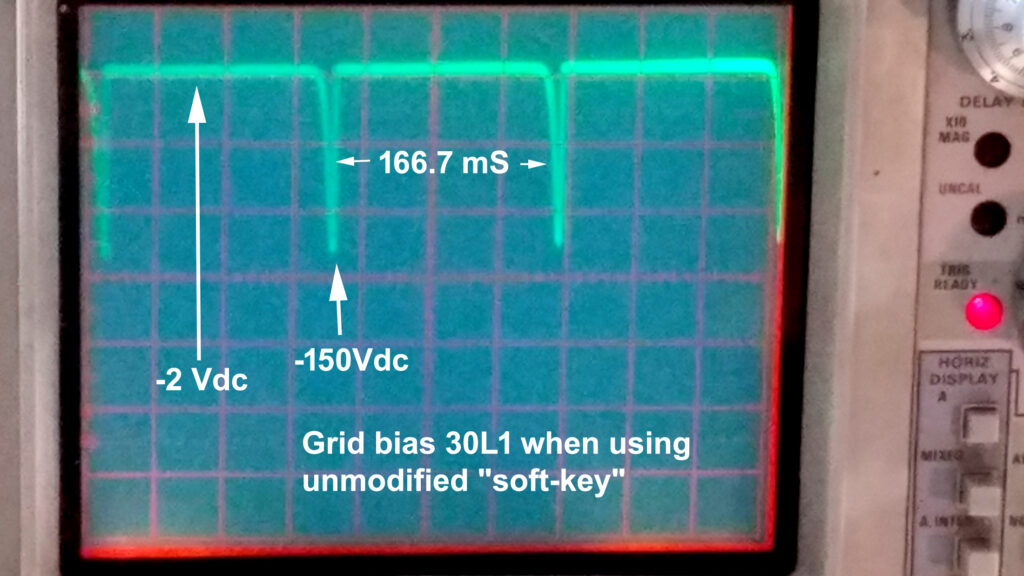
60Hz pulses caused by FET falling in and out of conduction with small levels of hum and noise.
Bias systems in Collins 30L-1, Heathkit SB-200, Yaesu FL2100 amplifiers, along with a few other amplifiers are directly dependent on relay keying circuit resistance and voltage to ground. The relay coil path must drop less than ~1 volt to ground and be stable for proper bias and signal quality. The control system (relay or keying line) must also be immune to external ripple and noise, or the ripple and noise modulates amplifier grid bias.
URB System
This universal relay buffer is an improved universal relay interface. It has an optical isolator that drives a complementary pair of transistors. The advantage of the complementary pair is extremely high current gain along with very low stable saturated switch voltage.
It has the following advantages:
1.) The input of the relay buffer or softkey board is at standard low-power TTL levels. The input switching threshold is about 2-3 volts dc. The high threshold makes this board far less critical for hum, noise, the type of radio, and less sensitive to unwanted interference. (compared to less than 1V threshold for other popular types)
2.) The input current is a few mA. This helps keep relay and switch contacts clean while also being safe with sensitive solid state radio outputs. Any radio pulling below two volts will reliably and safely activate the URB (universal relay buffer) system.
3.) The switched output is 100% ground isolated. One basic board works in high voltage positive relay systems like the SB220 Heathkit, high voltage negative systems like the SB200, or any relay system from a few hundred volts down to just a few volts.
4.) Adding a simple inexpensive external bridge rectifier allows use with up to 250Vac coil relays. The relay coil path is fully isolated from ground inside this unit for line voltage safety. A common external bridge rectifier will adapt this relay buffer to ac line operated relay systems up to 250Vac, such as old power line operated Dow Key or open frame relays.
5.) This board works on negative or positive relay lines up to 400Vdc using a saturated transistor in a unique complementary array.
6.) The relay control terminals are fully ground independent. This isolation not only eliminates hum-trigger issues, it also is allows full power line voltages to be applied between the output port and input system.
7.) Amplifier relay or amplifier control line current is conservatively rated at one ampere, making it the best on the market for high voltage or higher current relay systems.
8.) This relay buffer has virtually zero latency when compared to relay transfer times. This makes it superior to buffers using mechanical relays for hot switching.
This board is designed to fit inside all popular amplifiers, although it can be boxed and used externally.
Basic URB-1 relay interface buffer $34 (specify amplifier) plus postage Order now
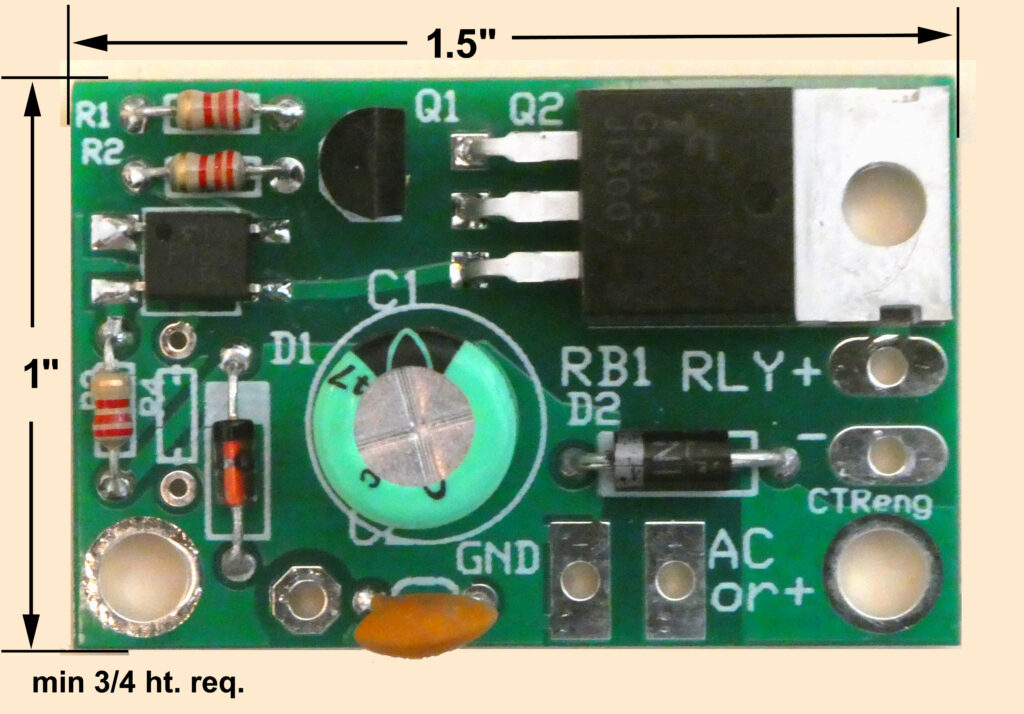
Universal Relay buffer for all popular amplifiers
SB200/Collins 30L-1 use
The URB-SB200 is prewired and fits the SB200 and 30L-1 amplifiers or similar. We prewire the board to reduce any chance of mistakes while making installation faster. It is $40 plus $8 shipping priority USPS
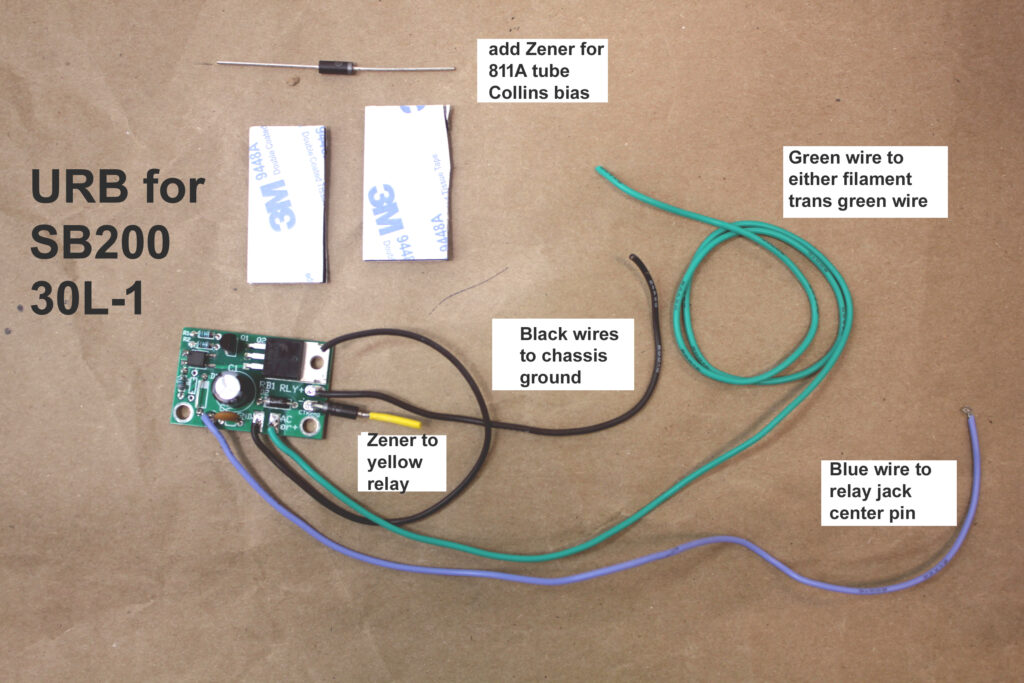
Aside from the unique board required in the FL2100/Collins 30L-1, and Heathkit SB-200, I highly recommend adding an installation kit that includes wires, (2) 230Vdc GDT tubes, new grid bypass capacitors, and a Zener bias diode. This kit will improve the performance, safety, and reliability. Additionally it reduces over-the-air IMD. This kit only adds $20 to the cost with no change in shipping fees.
SB220 Use
The SB220 unit is a URB-SB220. We prewire this unit and include an external resistor allowing it to get power from the 120+ dc bias line. This unit is $38 plus $8 USPS domestic Priority mail.
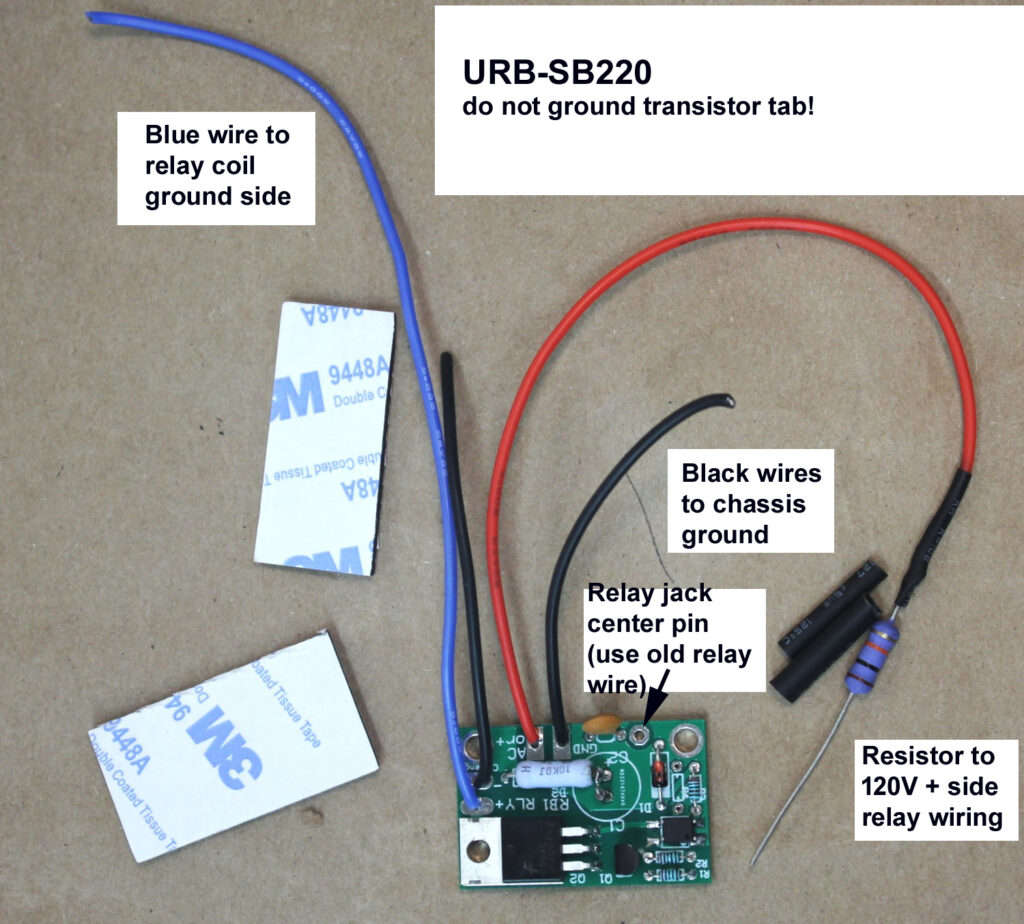
I do recommend directly grounding the grid pins with the shortest possible leads.
We stock other improved parts for the SB220 that can be included in shipping, including SB220 plate chokes, a filter capacitor board, and RF components.
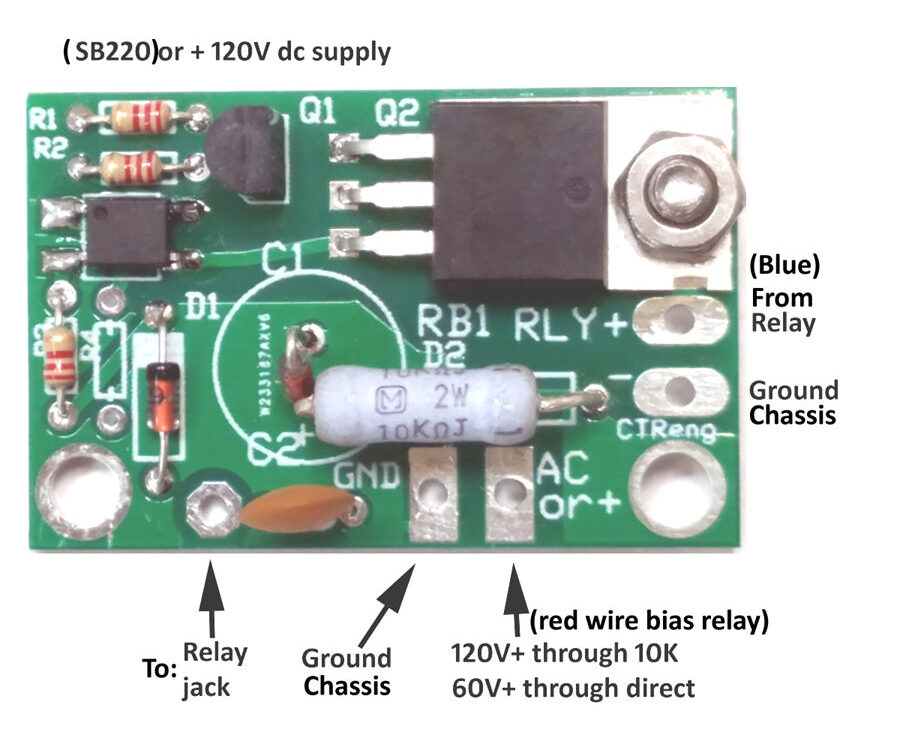
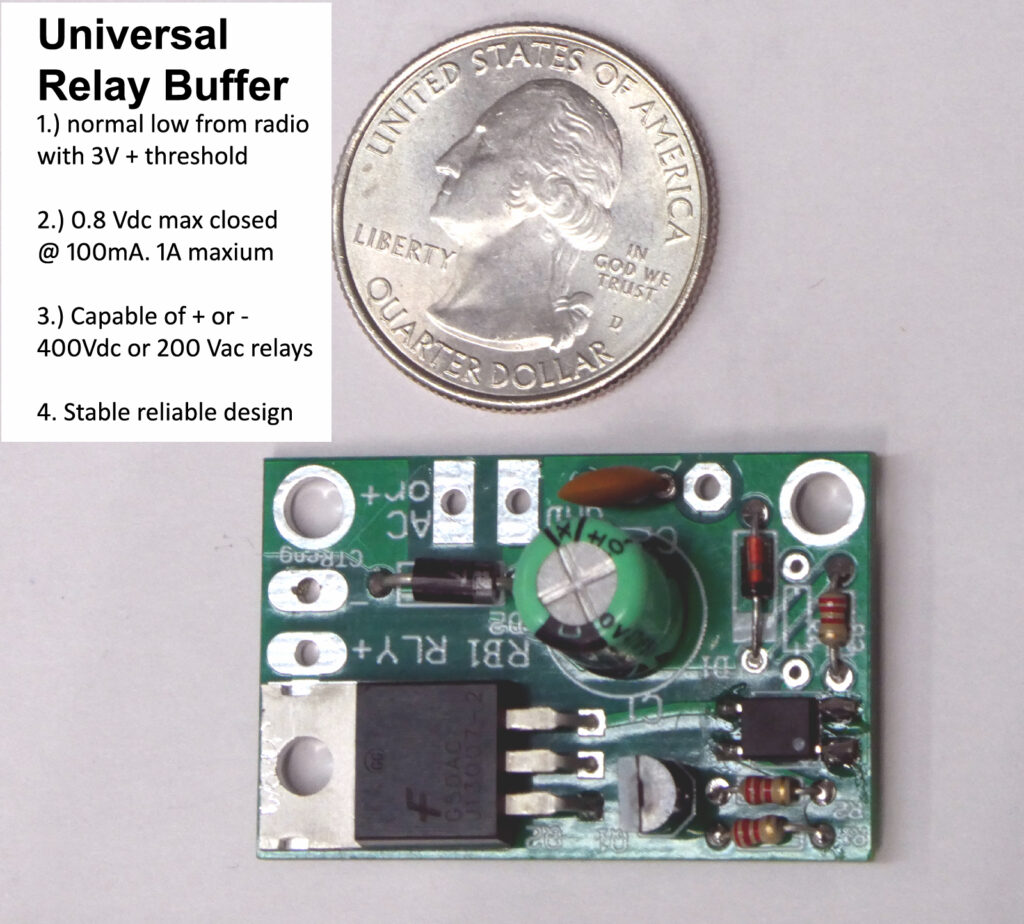
URB-1
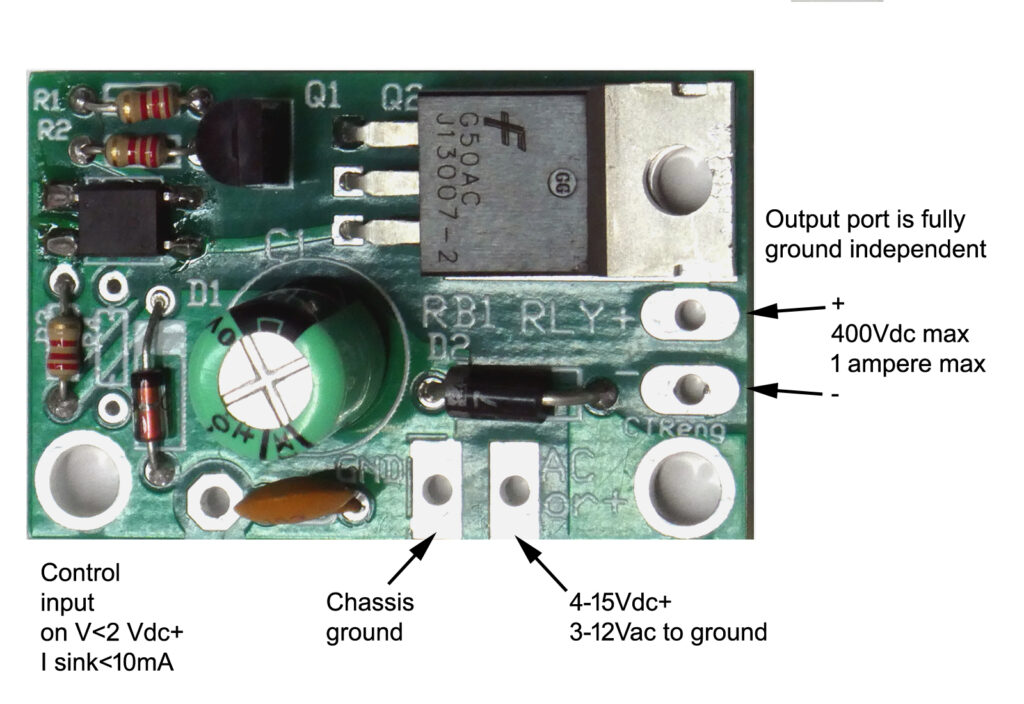
URB-1 Connections
Example of Unit Boxed With Rectifier for Old School 4-1000A Amplifier
Unit boxed by customer for use with his homebrew 4-1000A.
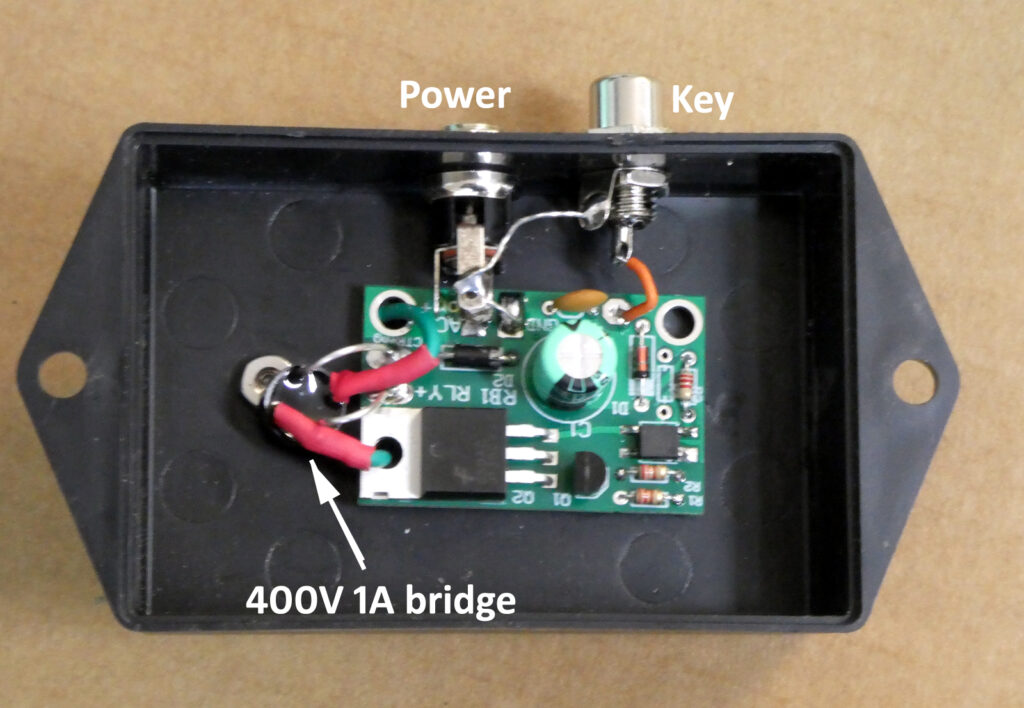
AC with addition of bridge rectifier for old amplifier systems
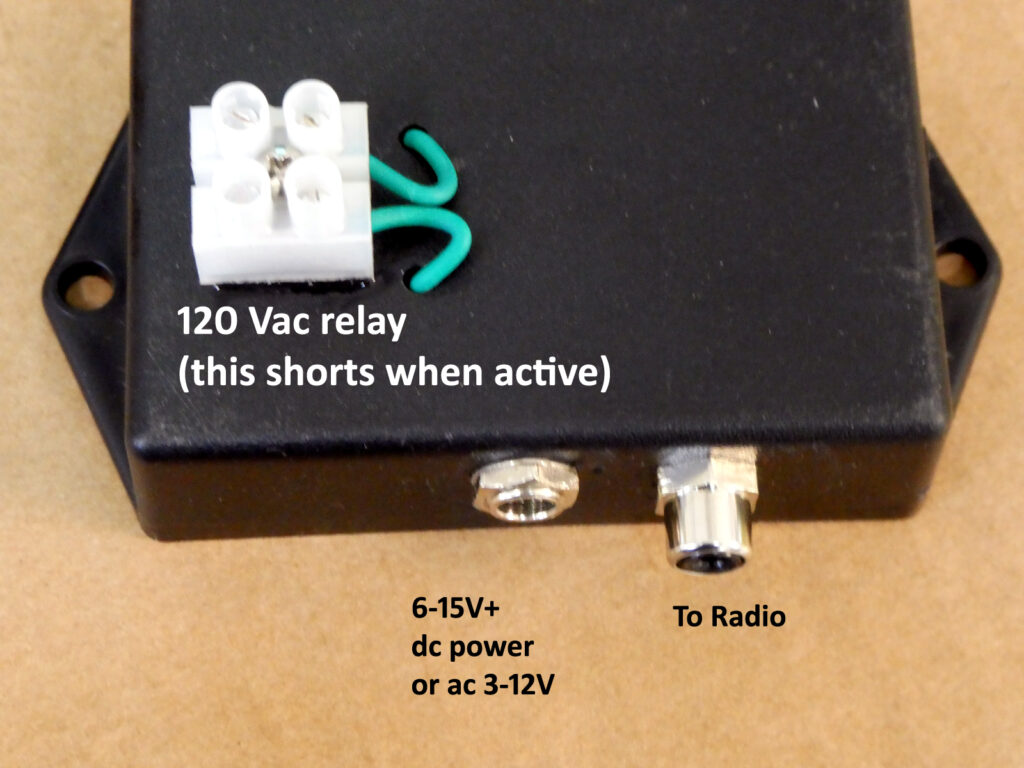
Outside of AC relay buffer interface
